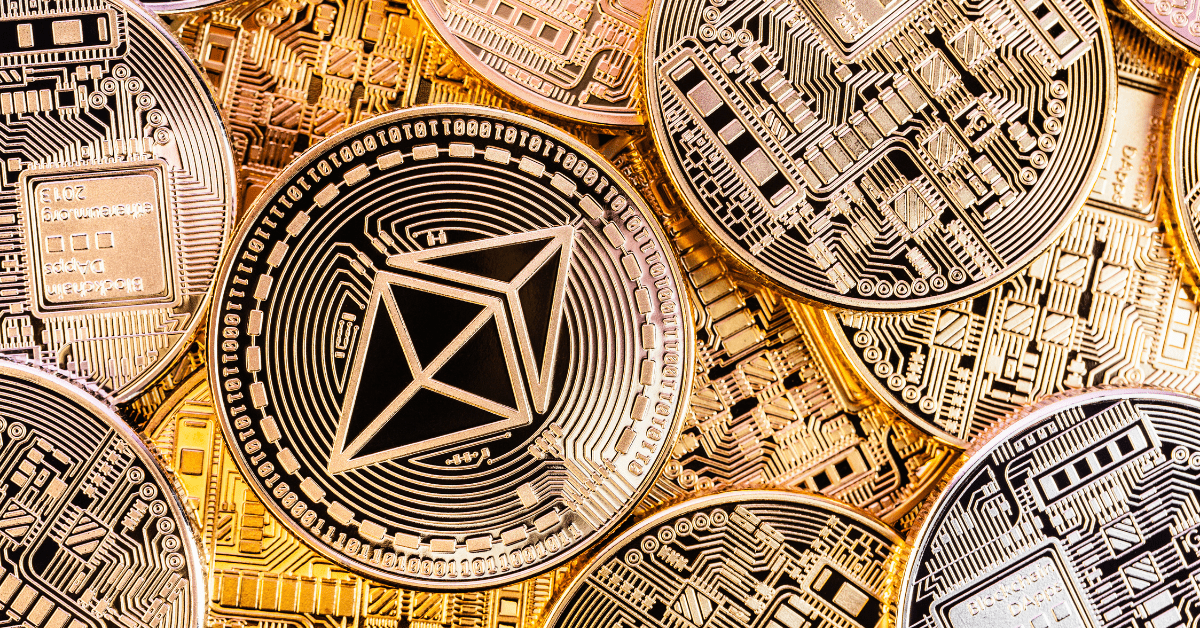Discover the origin, workings, and future potential of Chainlink. Learn about its role in secure smart contracts and data verification within a growing ecosystem. Chainlink (LINK) has quickly gained recognition in the cryptocurrency world for its unique approach to decentralized oracle networks. In this blog post, we will provide a comprehensive overview of Chainlink, exploring its origins, functionality, and potential future impact.
We will begin by delving into the history and development of Chainlink, shedding light on its inception and the problem it aims to solve. Following this, we will delve into the mechanics of how Chainlink works, simplifying its complex decentralized oracle network for readers to grasp easily.
Additionally, we will discuss the importance of secure smart contracts and how Chainlink plays a pivotal role in their development and execution. Furthermore, we will explore Chainlink’s significant function in data verification and its implications for various industries.
Moreover, we will take a look at the growing ecosystem of Chainlink, examining its partnerships, integrations, and community involvement. Lastly, we will discuss the future potential and outlook for LINK, offering insights into its growth trajectory and potential impact on the blockchain space. Join us as we demystify Chainlink and gain a deeper understanding of its significance in the cryptocurrency landscape.
Understanding Chainlink’s Origin
Chainlink was founded in 2017 by Sergey Nazarov and Steve Ellis.
Before creating Chainlink, Nazarov and Ellis had been involved in the cryptocurrency space for several years, with a focus on improving the security and reliability of smart contracts.
Recognizing the need for a decentralized oracle network to connect smart contracts with real-world data, they developed Chainlink to fill this gap in the market.
Their vision was to create a robust and secure infrastructure for smart contracts, enabling them to interact with external data sources in a trustless manner.
Explaining How Chainlink Works
Chainlink is a decentralized oracle network that aims to connect smart contracts with data from the real world. It acts as a bridge between blockchain and external data sources, allowing smart contracts to access information such as market prices, weather updates, and sports scores. This functionality is crucial for the widespread adoption of smart contracts, as it enables them to interact with the real world in a secure and reliable manner.
At the core of Chainlink’s infrastructure are nodes, which are responsible for retrieving, verifying, and delivering data to smart contracts. These nodes are operated by a large and diverse network of individuals and organizations, ensuring the reliability and security of the data being fed into the blockchain. In addition, Chainlink’s network uses a reputation system and multiple independent data sources to ensure the accuracy and integrity of the data being provided.
One of the key features of Chainlink is its ability to provide tamper-proof data to smart contracts. Through a process called ‘consensus aggregation,’ Chainlink ensures that the data provided to smart contracts is accurate and free from manipulation. This is achieved by aggregating data from multiple oracles and using their collective input to reach a consensus on the final result.
Overall, Chainlink’s unique approach to connecting smart contracts with external data sources has the potential to revolutionize the way we interact with blockchain technology. By providing a secure and reliable method for accessing real-world information, Chainlink opens up a world of possibilities for the development of decentralized applications and smart contracts.
Developing Secure Smart Contracts
Smart contracts are digital contracts that are self-executing with the terms of the agreement between buyer and seller being directly written into lines of code. Security is paramount when it comes to developing smart contracts, as they deal with sensitive and valuable information. It is crucial for developers to ensure that these contracts are secure from potential threats and vulnerabilities.
When developing smart contracts, it is important to understand the potential risks and vulnerabilities that can be exploited by malicious actors. This involves thorough testing and auditing of the code to identify and mitigate any potential security flaws. Developers must follow best practices in coding, such as using secure libraries, validating input parameters, and implementing proper access controls to prevent unauthorized access.
Furthermore, security measures such as encryption, multi-signature authentication, and permission controls can be implemented to enhance the security of smart contracts. Continuous monitoring and updating of the code is essential to stay ahead of evolving security threats and to address any newly discovered vulnerabilities.
In conclusion, developing secure smart contracts requires meticulous attention to detail and a proactive approach to security. By following best practices, staying informed about the latest security trends, and conducting regular audits and testing, developers can ensure that their smart contracts are robust and resilient against potential threats.
Chainlink’s Role in Data Verification
Chainlink’s role in data verification is crucial in ensuring the integrity and accuracy of information on blockchain networks. The decentralized nature of blockchain technology presents challenges in verifying the authenticity of external data sources. This is where Chainlink comes in, providing a reliable and secure solution for integrating real-world data into smart contracts.
Using a decentralized oracle network, Chainlink facilitates the connection between smart contracts and external data sources. This enables smart contracts to securely access off-chain data, such as market prices, weather conditions, and asset ownership records, to execute predetermined actions based on verified information.
Furthermore, Chainlink leverages multiple independent node operators to ensure the accuracy and reliability of data feeds. These node operators collectively source, validate, and deliver data to smart contracts, reducing the risk of data manipulation or tampering.
By validating and verifying external data inputs, Chainlink plays a critical role in enhancing the trustworthiness and transparency of blockchain-based applications. Its ability to securely bridge the gap between on-chain and off-chain data sources makes it an essential component for various use cases, including decentralized finance, supply chain management, and insurance.
The Growing Ecosystem of Chainlink
Chainlink’s ecosystem has been steadily expanding as the demand for decentralized oracle networks continues to grow. With the increasing adoption of blockchain technology, the need for reliable and secure data feeds has become more prominent, leading to the rise of projects like Chainlink that provide solutions for connecting smart contracts with real-world data. As the ecosystem matures, it is important to understand the various components that contribute to its growth and sustainability.
One key aspect of the growing ecosystem is the collaboration and partnerships that Chainlink has established with leading blockchain projects, decentralized finance platforms, and traditional enterprises. These partnerships have enabled Chainlink to expand its reach and provide its oracle services to a wide range of industries and use cases, further solidifying its position as a crucial infrastructure provider in the blockchain space.
Another factor driving the growth of Chainlink‘s ecosystem is the continuous development and improvement of its technology. The team behind Chainlink is dedicated to enhancing the usability, security, and scalability of its oracle network, ensuring that it remains at the forefront of the industry. This commitment to innovation has attracted a growing community of developers and users who are actively contributing to the expansion and improvement of Chainlink‘s ecosystem.
Furthermore, the growing demand for secure and reliable data oracles in various industries, such as decentralized finance, gaming, supply chain management, and insurance, has fueled the expansion of Chainlink‘s ecosystem. As more dApps and smart contract platforms integrate Chainlink‘s oracle services, the network effect strengthens, attracting more users and developers to participate in the ecosystem.
Future Potential and Outlook for LINK
Chainlink has been making waves in the world of blockchain and cryptocurrency, and its future potential looks incredibly promising. As the industry continues to evolve and mature, the need for decentralized oracle networks like Chainlink will only grow. With the increasing demand for reliable and secure data oracles, Chainlink is well-positioned to play a critical role in the future of smart contracts and decentralized applications.
One of the key factors contributing to the future potential of LINK is its strong and active community. Chainlink has garnered support from developers, enthusiasts, and industry experts who recognize the significance of its technology. This community-driven approach has helped to establish LINK as a leading player in the oracle space, and its network effects continue to strengthen as more participants join the ecosystem.
Looking ahead, the outlook for Chainlink is bright as it continues to expand its capabilities and integrations. With ongoing developments such as the integration of off-chain data and the expansion of its ecosystem, Chainlink is well-positioned to capture a larger market share and cement its position as a crucial infrastructure provider in the blockchain industry.
As the adoption of smart contracts and decentralized applications grows, the demand for reliable and secure data oracles will only increase. Chainlink’s future potential lies in its ability to meet this growing demand and provide a robust and decentralized solution that addresses the industry’s evolving needs.
 Crypto Journal: Analyses, News, and Developments – Coin Chronicle Platform Coin Chronicle is your go-to source in the dynamic world of cryptocurrencies.
Crypto Journal: Analyses, News, and Developments – Coin Chronicle Platform Coin Chronicle is your go-to source in the dynamic world of cryptocurrencies.




